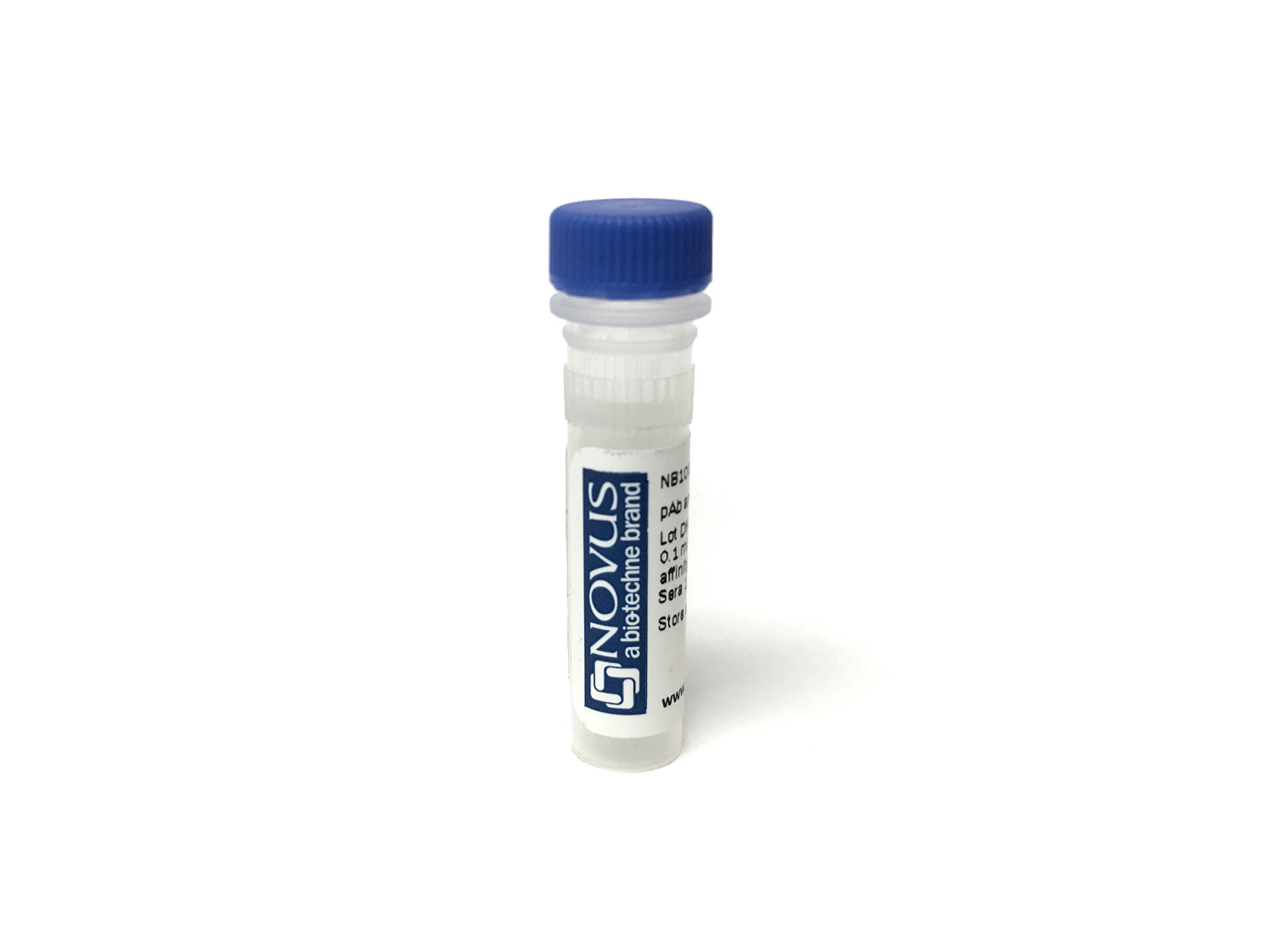CCR7 Antibody (R707) - Low Endotoxin, Azide and BSA Free
Novus Biologicals, part of Bio-Techne | Catalog # NBP3-28566
Recombinant Monoclonal Antibody


Conjugate
Catalog #
Key Product Details
Species Reactivity
Human
Applications
ELISA, Flow Cytometry, Functional
Label
Unconjugated
Antibody Source
Recombinant Monoclonal Human IgG1 Clone # R707
Format
Low Endotoxin, Azide and BSA Free
Concentration
LYOPH mg/ml
Product Specifications
Immunogen
CCR7 / CD197
Clonality
Monoclonal
Host
Human
Isotype
IgG1
Endotoxin Level
< 0.001EU/ug,determined by LAL method.
Description
Expressed from CHO. The heavy chain type is huIgG1, and the light chain type is hukappa. It has a predicted MW of 144.16 kDa.
Upon receipt, store immediately at -20C or lower for 24 months in a lyophilized state. - 80C for 3 months after reconstitution. Avoid repeated freeze-thaw cycles.
Upon receipt, store immediately at -20C or lower for 24 months in a lyophilized state. - 80C for 3 months after reconstitution. Avoid repeated freeze-thaw cycles.
Applications for CCR7 Antibody (R707) - Low Endotoxin, Azide and BSA Free
Application
Recommended Usage
ELISA
Optimal dilutions of this antibody should be experimentally determined.
Flow Cytometry
Optimal dilutions of this antibody should be experimentally determined.
Functional
Optimal dilutions of this antibody should be experimentally determined.
Formulation, Preparation, and Storage
Purification
Protein A purified
Reconstitution
Reconstitute with sterile, distilled water to a final concentration of 1 mg/ml. Gently shake to solubilize completely. Do not vortex.
Formulation
Lyophilized from 25mM histidine, 8% sucrose, 0.01% Tween80 (pH6.2)
Format
Low Endotoxin, Azide and BSA Free
Preservative
No Preservative
Concentration
LYOPH mg/ml
Shipping
The product is shipped at ambient temperature. Upon receipt, store it immediately at the temperature recommended below.
Stability & Storage
Store at 4C.
Background: CCR7
The primary role of the CCR7/CCL19/CCL21 chemokine signaling axis is homing T cells and DCs to lymph nodes and lymphoid tissues to initiate an immune response (1,2,5,6). In the context of cancer, the CCR7 signaling axis appears to have two opposing roles (2). Downregulation of CCR7 on CD8+ T cells contributes to effector cell migration and anti-cancer activities via cytotoxic tumor-infiltrating lymphocytes (2). However, upregulation of CCR7 by cancer cells can result in cancer cell migration and metastasis (2). Overexpression of CCR7 has been implicated in a variety of cancers including breast, cervical, gastric, head and neck cell carcinoma, and prostate (1,2,7). Studies in breast cancer have found that hypoxia increases CCR7 expression, and this activation can affect cancer cell invasion, extravasation, proliferation, angiogenesis, and metastasis through induction of multiple signaling transduction pathways such as PI3K/AKT, MAPK, and JAK/STAT (5,7).
Given its important role in inflammation and immune response, several strategies have been employed to target the CCR7 signaling axis for cancer immunotherapy (2). Some cancer immunotherapies under investigation include intra-tumoral administration of CCL19 and CCL21, introduction of patient-derived cells transfected to express CCR7 or its ligands, and vaccines (2). Further interrogation of CCR7/CCL19/CCL21 signaling axis is required to develop better therapeutic strategies for cancer treatment.
References:
1. Comerford, I., Harata-Lee, Y., Bunting, M. D., Gregor, C., Kara, E. E., & McColl, S. R. (2013). A myriad of functions and complex regulation of the CCR7/CCL19/CCL21 chemokine axis in the adaptive immune system. Cytokine & growth factor reviews, 24(3), 269-283. https://doi.org/10.1016/j.cytogfr.2013.03.001
2. Salem, A., Alotaibi, M., Mroueh, R., Basheer, H. A., & Afarinkia, K. (2021). CCR7 as a therapeutic target in Cancer. Biochimica et biophysica acta. Reviews on cancer, 1875(1), 188499. https://doi.org/10.1016/j.bbcan.2020.188499
3. Yan, Y., Chen, R., Wang, X., Hu, K., Huang, L., Lu, M., & Hu, Q. (2019). CCL19 and CCR7 Expression, Signaling Pathways, and Adjuvant Functions in Viral Infection and Prevention. Frontiers in cell and developmental biology, 7, 212. https://doi.org/10.3389/fcell.2019.00212
4. Uniprot (P32248)
5. Korbecki, J., Grochans, S., Gutowska, I., Barczak, K., & Baranowska-Bosiacka, I. (2020). CC Chemokines in a Tumor: A Review of Pro-Cancer and Anti-Cancer Properties of Receptors CCR5, CCR6, CCR7, CCR8, CCR9, and CCR10 Ligands. International journal of molecular sciences, 21(20), 7619. https://doi.org/10.3390/ijms21207619
6. Sanchez-Sanchez, N., Riol-Blanco, L., & Rodriguez-Fernandez, J. L. (2006). The multiple personalities of the chemokine receptor CCR7 in dendritic cells. Journal of immunology (Baltimore, Md. : 1950), 176(9), 5153-5159. https://doi.org/10.4049/jimmunol.176.9.5153
7. Rizeq, B., & Malki, M. I. (2020). The Role of CCL21/CCR7 Chemokine Axis in Breast Cancer Progression. Cancers, 12(4), 1036. https://doi.org/10.3390/cancers12041036
Additional CCR7 Products
Product Documents for CCR7 Antibody (R707) - Low Endotoxin, Azide and BSA Free
Product Specific Notices for CCR7 Antibody (R707) - Low Endotoxin, Azide and BSA Free
This product is for research use only and is not approved for use in humans or in clinical diagnosis. Primary Antibodies are guaranteed for 1 year from date of receipt.
